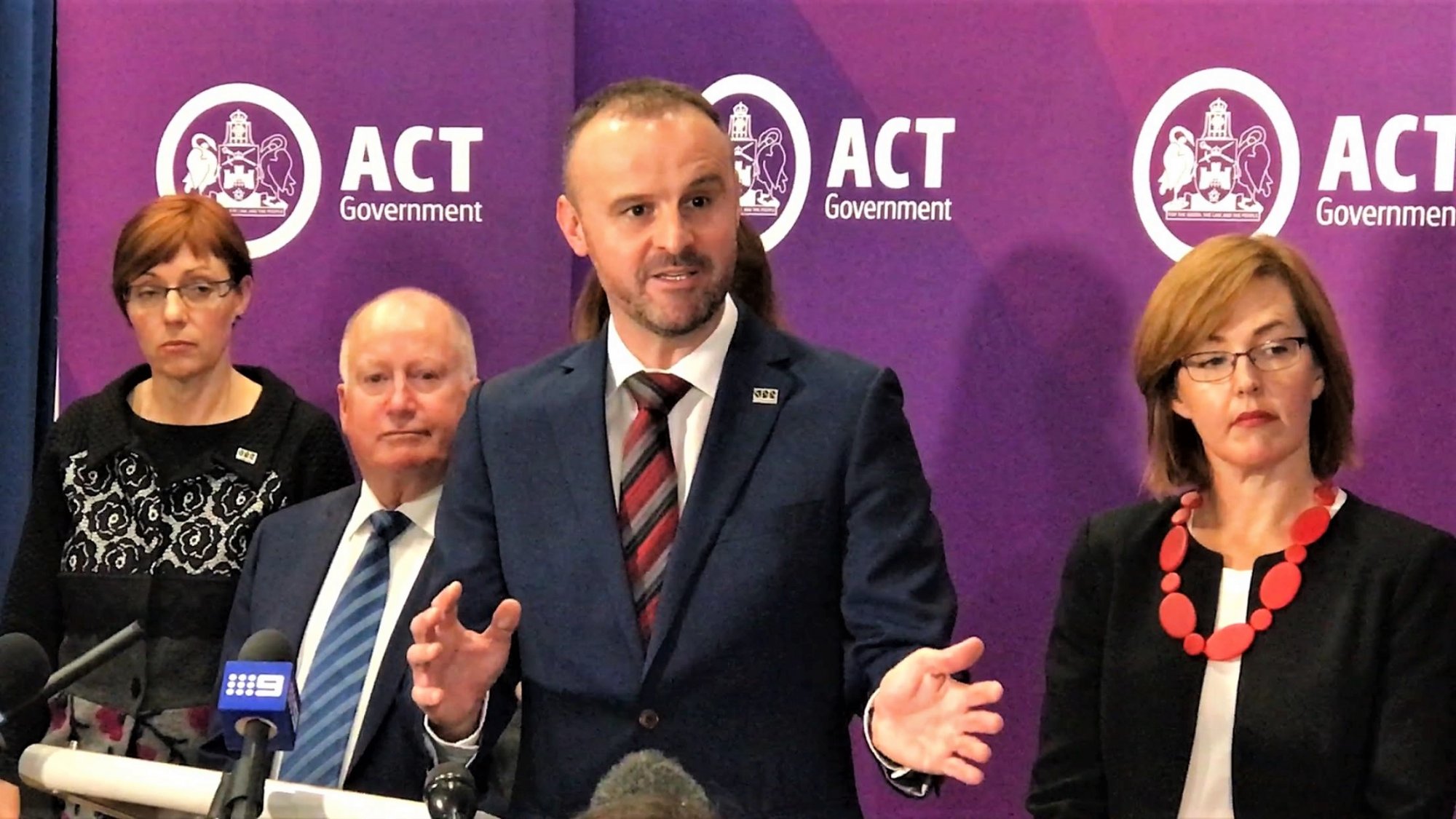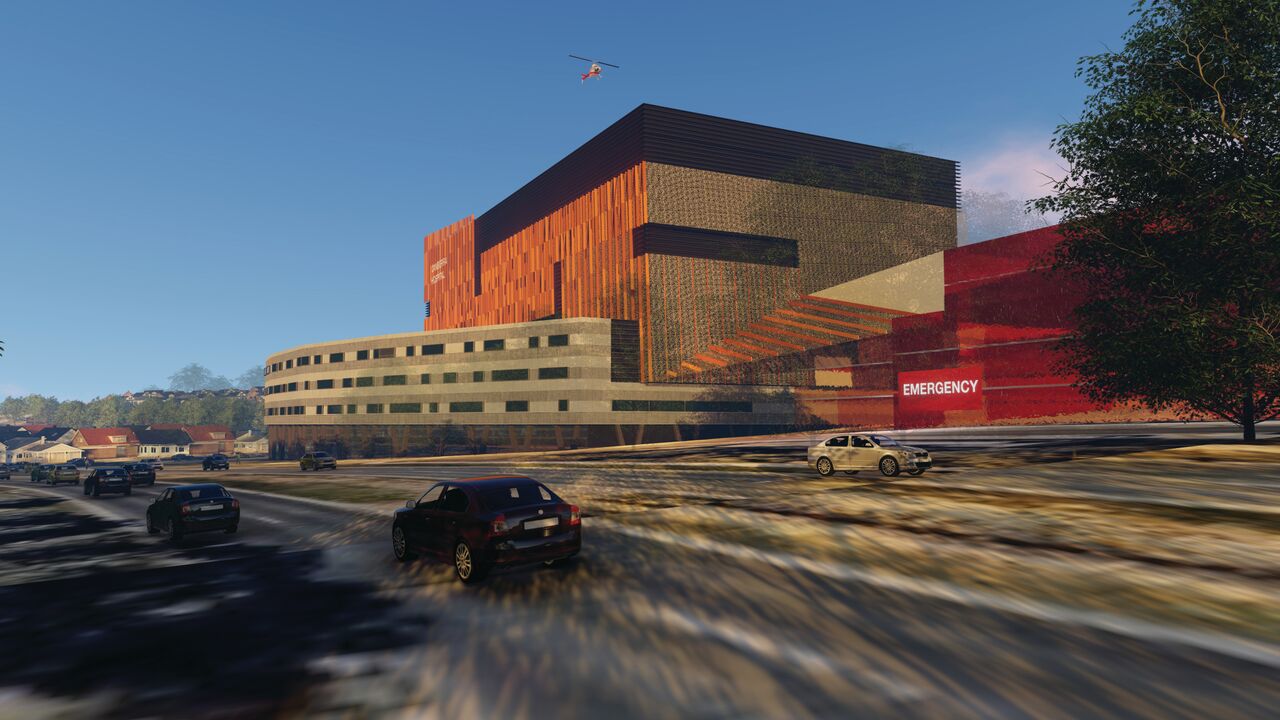
The ACT Government believes it is on track for its budget to be back in balance in the 2018-19 financial year despite the Mr Fluffy hit on its books in 2014 and a big-spending infrastructure program for health, schools and public transport.
However, ratepayers will feel the pinch with rates to again rise by around seven per cent in the coming financial year and for each year in the foreseeable future.
Unit owners will be slugged with an added rate increase for each of the next two years, paying an extra $150 in 2017-18 and a further $115 in 2018-19.
The 2017-18 ACT Budget brought down today has a projected deficit of $83.4 million with a forecast of returning to a small surplus of $9.7 million in the 2018-19 financial year.
Big ticket items include an increased investment of $443 million in health, $210 million more for local schools and $53.5 million to design the route for Stage Two of the light rail network to Woden.
Many of the commitments in today’s Budget have been foreshadowed during a flurry of ACT Government announcements in recent weeks but details of a new $500 million centre for Canberra Hospital were released today.
The Government has committed $236 million over the next four years to design and start construction of a new Surgical Procedures, Interventional Radiology and Emergency (SPIRE) Centre within the Canberra Hospital precinct.
The centre will have a ward dedicated to elective surgery and offer world-class radiology services. It will also have a much larger emergency department with a separate paediatric ward.

Features of the new SPIRE Centre include:
- a larger intensive care unit with 48 beds
- a 24-bed coronary care unit
- more inpatient wards with 64 beds for overnight care
- more elective and day surgical spaces
- state-of-the-art surgical, procedural and imaging facilities
Once the SPIRE centre is built, the current emergency department will be dedicated to providing specialist emergency healthcare for women and children.
Other Government funding commitments in the 2017-18 ACT Budget include:
Health
- Almost $70 million to expand the Centenary Hospital for Women and Children, delivering a new ward with another 40 maternity beds
- $17.3 million to renovate the existing acute aged care and cancer facilities at the Canberra Hospital
- $14 million over five years to build and plan for new nurse-led Walk-in Centres in Gungahlin, Weston Creek and the Inner North
- $12.1 million to build a new health centre for Aboriginal and Torres Strait Islander Canberrans
- $3.3 million to begin planning for enhanced northside hospital facilities
- $16.1 million to ensure full operational readiness for the new University of Canberra Public Hospital to open in 2018
- $4 million to invest in initiatives as part of a new preventative health strategy to reduce the burden of chronic disease
- $3.2 million to purchase and operate two additional mobile dental vans to provide dental care closer to home for those who need it
- $2.7 million to establish a new Year 7 health check for Canberra students
- $36 million to train and support more frontline health staff, including 12 new nurse navigators to support patients with complex needs
- $2.7 million to establish a new University of Canberra clinical school for nursing, midwifery and allied health
Education
- $100 million for upgrades to ACT schools including $85 million to public schools. The upgrades include $5.9 million for stage 3 of the Belconnen High School Modernisation, upgrades and extensions to new and existing classrooms, and new gardens and horticultural facilities
- $26.2 million to expand schools in Gungahlin, including Harrison School, Gold Creek School, Neville Bonner Primary School and Palmerston District School
- $17.2 million provision to deliver technology-enabled learning devices for students, helping to ensure that every public high school and college student has access to a device
- $16.1 million for school assistants to help provide better support for teachers
- $3 million to support students with disability
- $3.3 million to improve the safety of students walking and cycling around schools
- $2.4 million to fund the first five of 20 new psychologists for public schools
- $1 million for safer workplaces for teachers, educators and support staff
Public Transport
Funding of $65 million over four years to improve Canberra’s public transport network, with initiatives to include:
- $53.5 million for the second stage of light rail between the City and Woden
- $7 million for free travel on two new Rapid Bus routes, free off-peak buses for seniors and concession card holders and to continue the Free City Loop, Airport and Route 182 Weston Line services
- $2.1 million to progress procurement of integrated bus and light rail ticketing and investment in ticket machines
- $1.7 million for faster bus travel though bus priority infrastructure, bus service improvements and new bus stops
An investment in the 2017-18 ACT Budget of $54 million in upgrades to roads across the ACT including:
- $35 million for stage two of the Gundaroo Drive duplication, replacement of the roundabout at Gundaroo Drive/ Mirrabei Drive/ Anthony Rolfe Avenue with traffic lights, a new four-way signalised intersection at the Federal Highway and Old Wells Station Road and stormwater works on Flemington and Morisset Roads
- $8 million to construct an access road to the Canberra Brickworks Precinct
- $6 million to investigate upgrades and duplication of the Monaro Highway and Pialligo Avenue
- $4.5 million over three years for increased road resealing across Canberra
- $900,000 for design works on upgrades to Bindubi Street and William Hovell Drive in Belconnen and east-west arterial roads in the Molonglo Valley
In addition, the Government has made a commitment of $8.3 million over four years into community transport through the Community Transport Coordination Centre, incorporating the Flexible Bus Service and special needs transport.
City Renewal
- $59 million over four years to enable the City Renewal Authority to revitalise the CBD, Dickson and Northbourne Avenue and create a lakeside precinct in West Basin
- $8 million over two years to revitalise Canberra’s shopping precincts
- $4.7 million for design works and construction of the Belconnen Bikeway linking Belconnen Town Centre to educational and health institutions and Lake Ginninderra
- $11.1 million to improve waste management, prepare for the rollout of a Territory-wide bulky waste collection service from 2018-19 and the introduction of a container deposit scheme
- $5.4 million for the Quality Sportsgrounds Program
- $4.5 million over three years to resurface up to 150,000 square metres more of roads each year
- $3.1 million to renovate Woden Town Library and improve public access to library records
- $2.3 million for city services in Canberra’s new suburbs
- $1.9 million over two years to remove more weeds along major roads, provide more street art coordination and graffiti removal and the like
- $1.3 million over two years to better control weeds in Canberra’s urban open space, along rural roadsides and within nature parks
- $1.2 million to ensure we can better manage animal welfare including more funding to the RSPCA and expanding the size of the pound
- $5.3 million nightlife package which will deliver a variety of initiatives including $4.9 million over four years for six additional police officers to patrol nightlife precincts




















